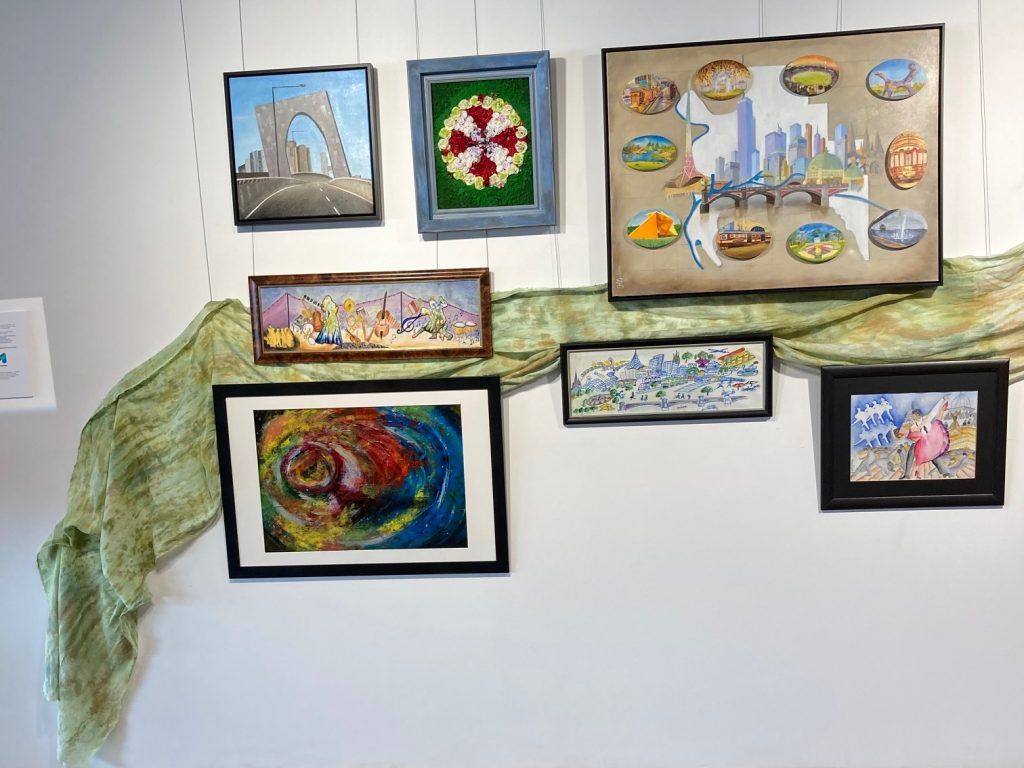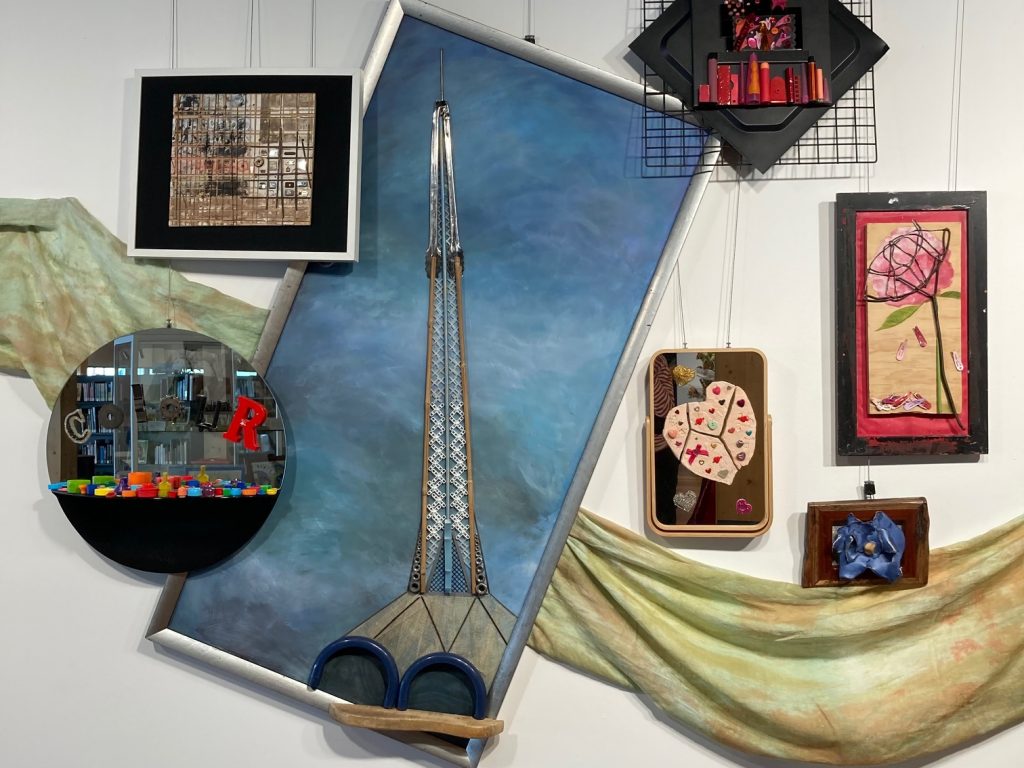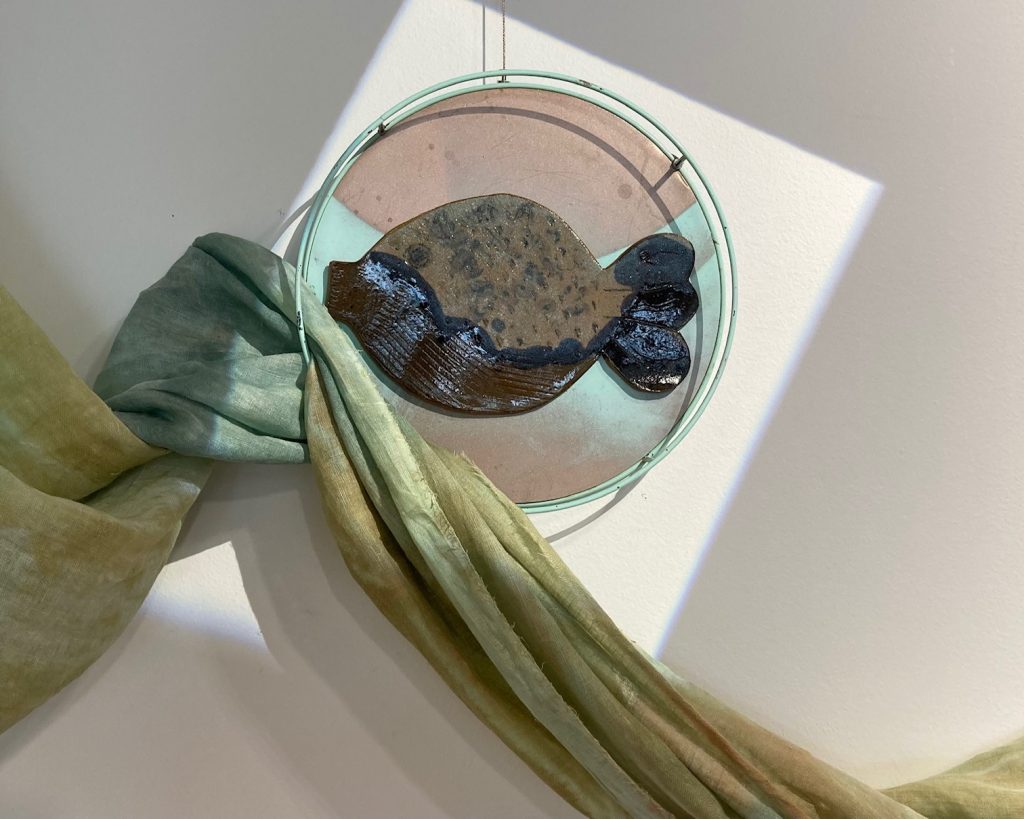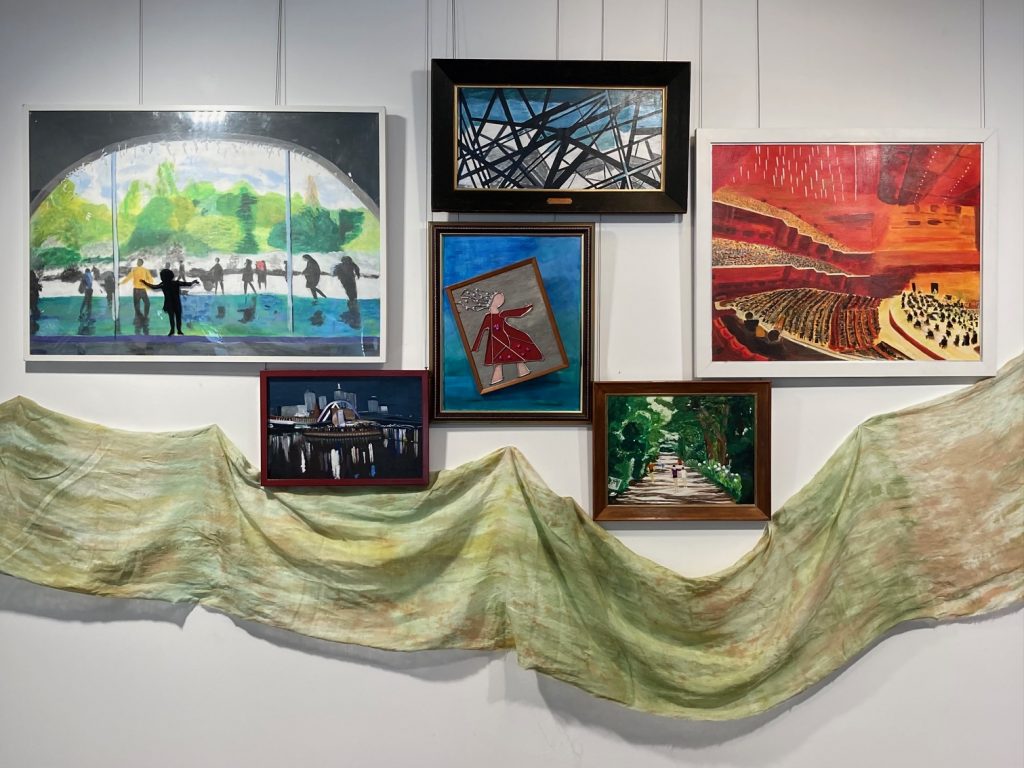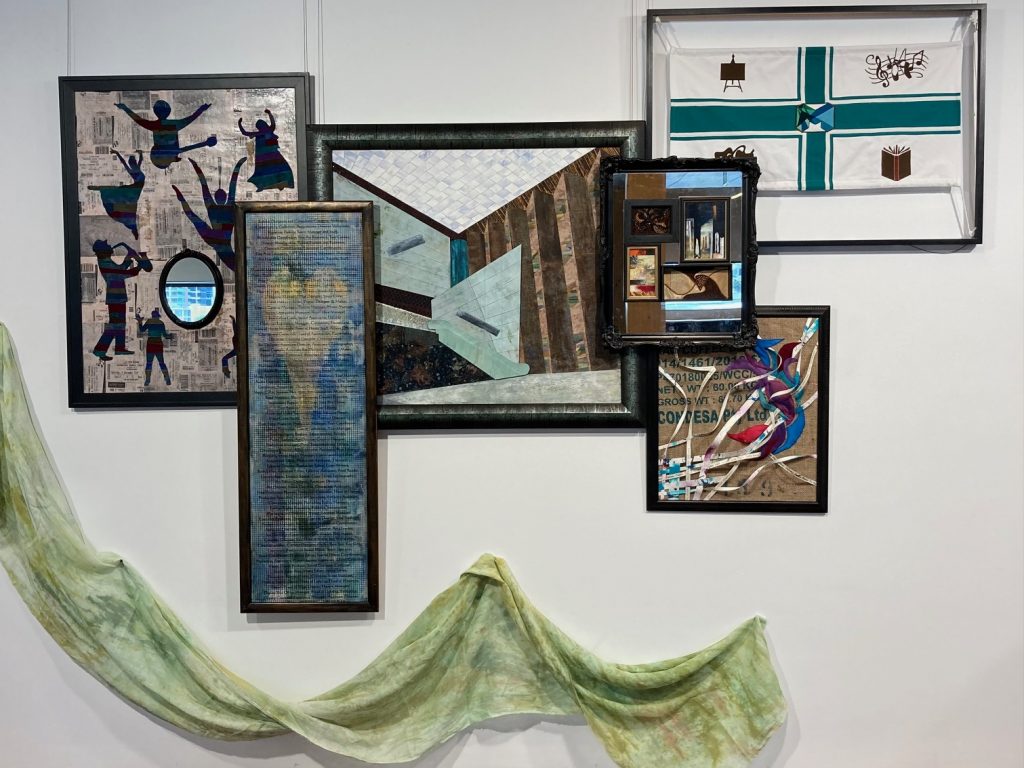The Concept of the River
Lindsay Hussey and Pat Duncan describe the development process
At one of Creativity Cluster’s early planning meetings to discuss the exhibition Melbourne: Our Creative Heart, we each contributed ideas that would link our artworks to the theme. These included mirrors, silhouettes, domes and arches, grids and coffee.

The idea of a river
Deidre Ogilvie and Pat Duncan also thought that the Yarra River should be a feature of the exhibition. Each produced experimental ways to include the river.
Although the group liked Deidre’s idea of the river in its accurate spatial form linking features of the city of Melbourne, this design did not work well in the exhibition space. However, she was able to give a representation of this as one of the artworks in her cluster (see Deidre’s blog).
The group then considered the idea of linking all the artwork clusters using a roll of wallpaper that Pat painted. That experiment was also seen as unfeasible, due to its inability to ‘flow’ and to fit in with the varied clusters of framed works.
Finally, the group decided on fabric as the best option. It would allow the river to be draped and mounted in a shape linking the clusters of work placed along the path of the Yarra.
Pat took on responsibility for creating the fabric river. She purchased a couple of different types of fabric to experiment and see which was best for meeting our ‘draping’ requirement.


Time for experimenting
Once the group members had made headway with their artworks, they discussion options for colouring the fabric. Lindsay, with her experience with textiles, recommended dyeing with Procion cold water dyes as the most effective option.
Lindsay and Pat then had a day of dyeing the various fabrics. The purpose was primarily to teach Pat about the dyeing technique, but also to trial the various types of fabric.
The result of these experiments was that the group chose a linen/cotton blend as the best option. As an open weave fabric, it draped well. As a 100% natural fibre, it would also dye well with cold water dyes.
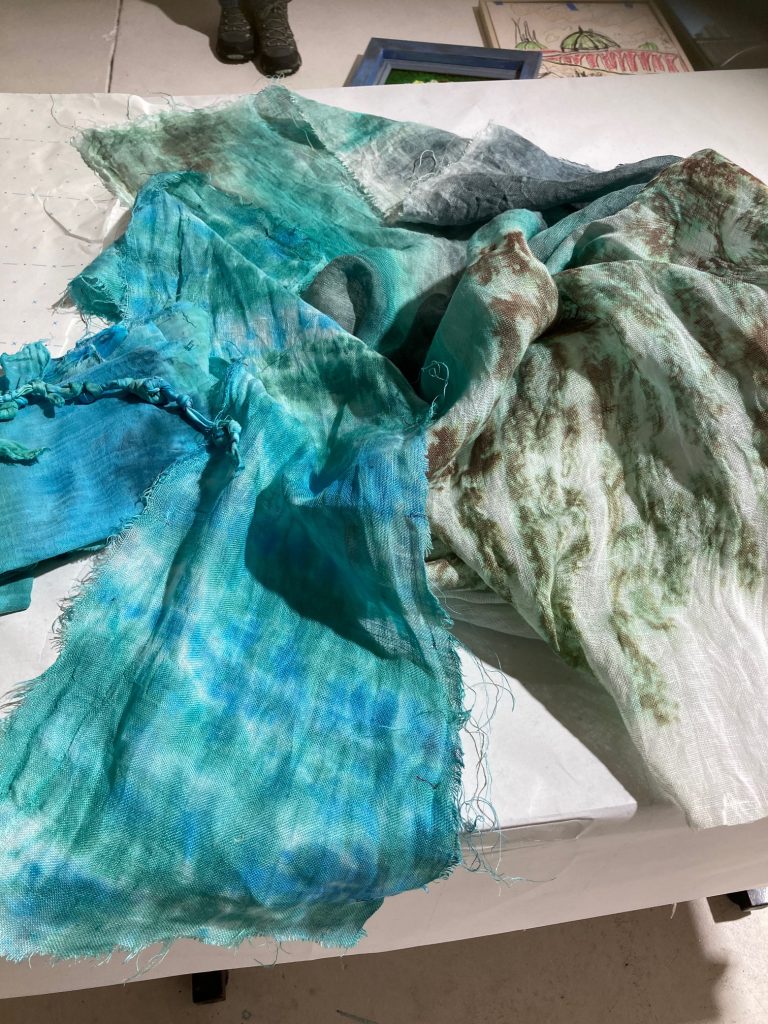
Calculating length
The next task was to calculate how many metres of fabric we needed. We took advantage of a meeting at River Studios, where we laid out all the nearly complete artwork clusters as they would be hung to calculate our fabric requirement.
To give the effect of the undulating river traversing the whole exhibition space, the river fabric needed to be at least 26 metres long. The linen was wide, so Pat purchased half this length and we split it lengthways.

Preparations for the dyeing process
A group day in the garden at Pat’s place gave the artists an opportunity to participate in creating the river.
Lindsay recommended Procion cold water, fibre re-active dyes as the most effective option for colouring the river fabric. The process is fairly simple, particularly as there is no heating required.
The artists chose the dye colours: Old Gold, Lichen, Olive, Coral, Sapphire and Cobalt Blue. The dye comes in a powder form. Lindsay first mixed this with a little warm water, then diluted it with cold water to the required colour intensity.
To prepare the fabric, she first soaked it in soda ash for 30 minutes. The soda ash enables the dye molecules to chemically bond with the fabric molecules to create permanent colour. The fabric was then wrung out, to make it ready for dyeing.
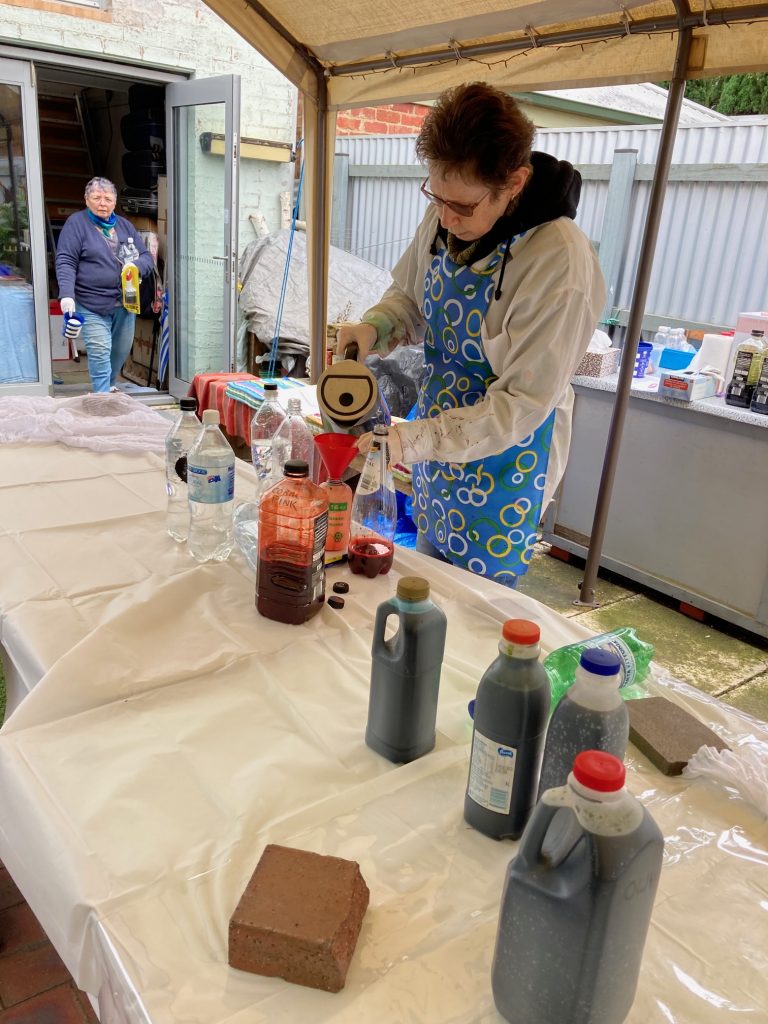

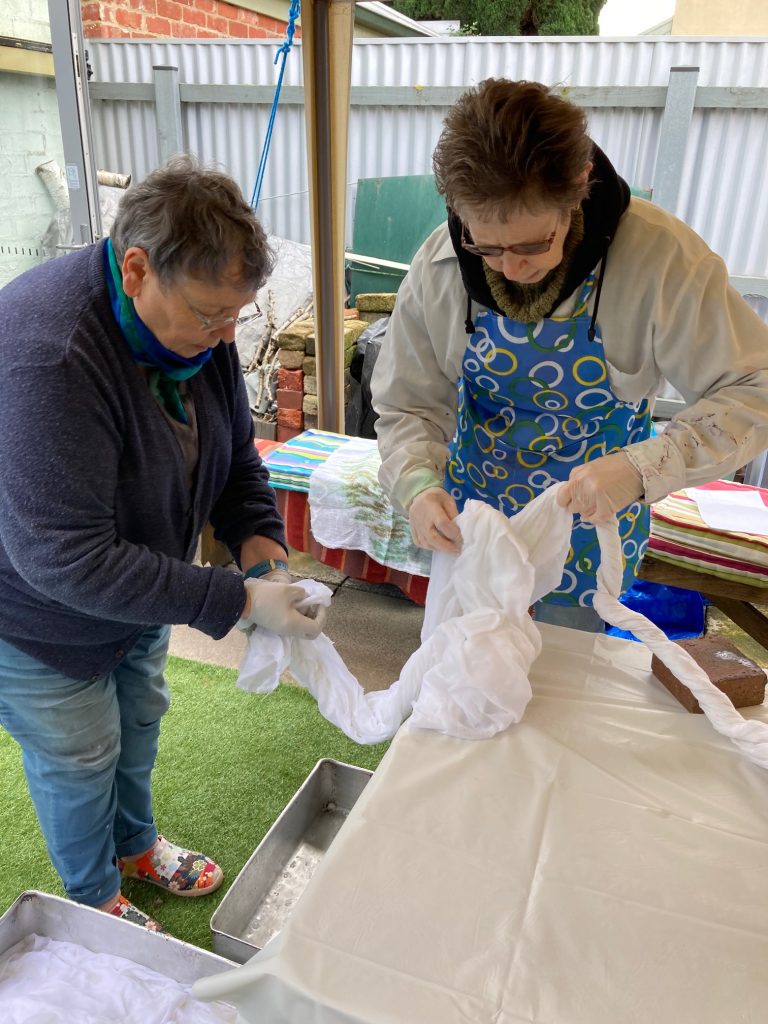
A time to dye
Group members applied the dye to the fabric in various ways: using brushes, pouring and dripping. In some places, we added salt to give a mottled effect.
Progressively we painted lengths of the fabric, overlapping and enhancing each other’s work. We mixed the colours to create a variety of tints and shades.
At this stage, we didn’t know what the final result would be. This is because the process of fixing the dye and washing would tone down the colours.




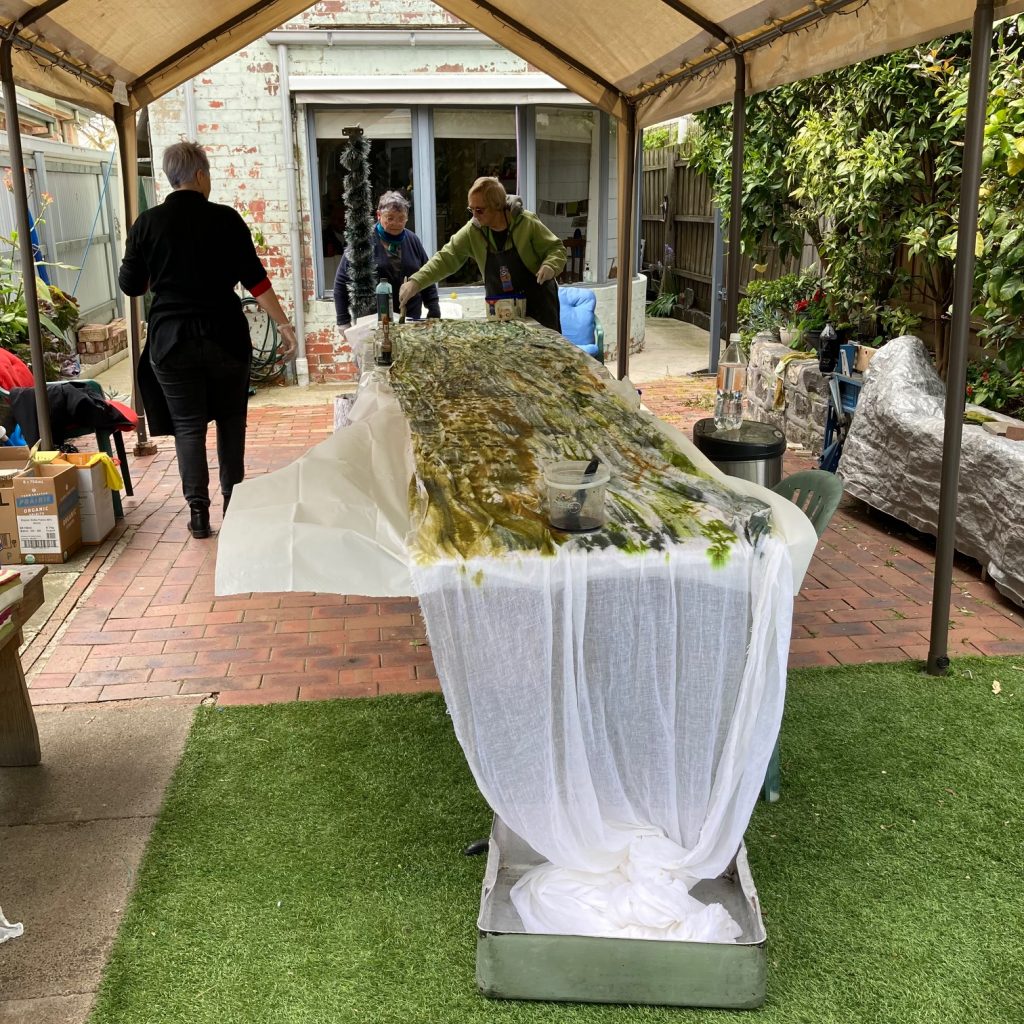

Nearing the end of the dyeing process
After we finished applying the dye, we rolled the fabric up in plastic for batching and turned it over to Lindsay. Batching gives the dye time to bond with the fabric. It requires the dyed fabric to be kept warm and moist for a minimum of 24 hours.
Following batching, Lindsay first rinsed the fabric in hot water to wash out the soda ash and start removing the excess dye. She then soaked it in cool water for a couple of days to remove most of the excess dye.
Finally, Lindsay washed the fabric in hot water and Synthrapol, a pH-neutral, liquid detergent. This removes the last of the loose dye molecules that have not chemically bonded to the fabric. Using this detergent makes the dye colour-fast.
Because of the large amount of fabric, Lindsay did this in her washing machine. She then hung the fabric to dry and ironed it ready for hanging.
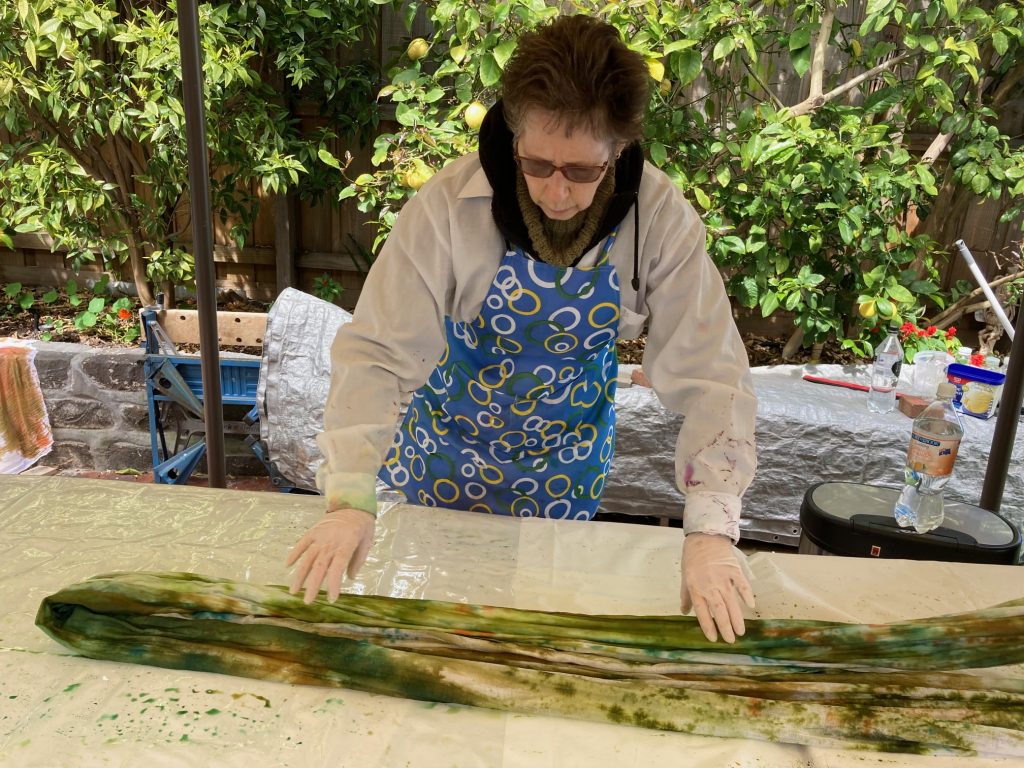

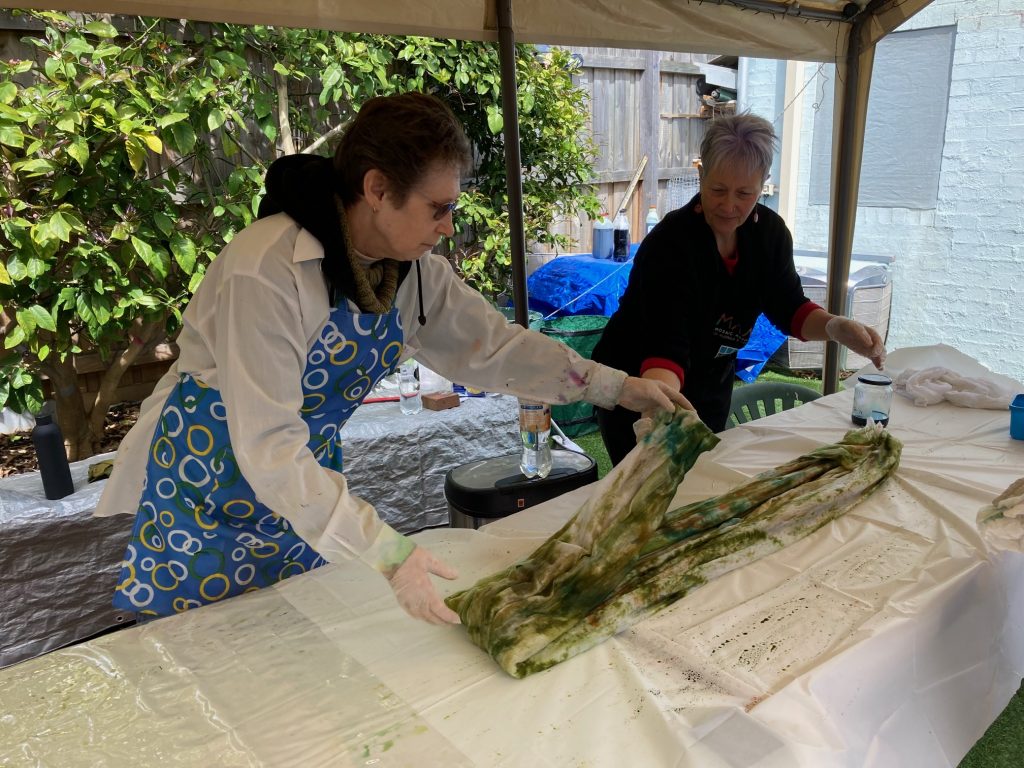
The exhibition
The first time all the artists saw the completed river fabric was at bump-in at the Library at the Dock gallery. As a folded bundle, it looked drab and lifeless.
However, we split it in half lengthways, then stretched and draped it around the artwork clusters. There it suddenly seemed to lighten and give cohesion to the exhibition (see online exhibition).
